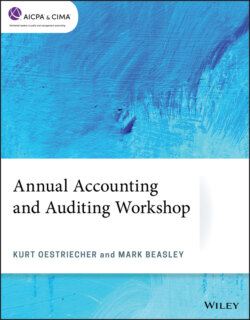Читать книгу Annual Accounting and Auditing Workshop - Kurt Oestriecher - Страница 34
На сайте Литреса книга снята с продажи.
What are the main provisions of this ASU?
ОглавлениеThe amendments in this update clarify that a financial asset is within the scope of FASB ASC 610-20 if it meets the definition of an in substance nonfinancial asset. The amendments define the term in substance nonfinancial asset, in part, as a financial asset promised to a counterparty in a contract if substantially all of the fair value of the assets (recognized and unrecognized) that are promised to the counterparty in the contract is concentrated in nonfinancial assets. If substantially all of the fair value of the assets that are promised to the counterparty in a contract is concentrated in nonfinancial assets, then all of the financial assets promised to the counterparty are in substance nonfinancial assets within the scope of FASB ASC 610-20.
The amendments in this update also clarify that an entity should identify each distinct nonfinancial asset or in substance nonfinancial asset promised to counterparty and derecognize each asset when counterparty obtains control of it. In addition, an entity should allocate consideration to each distinct asset by applying the guidance in FASB ASC 606 on allocating the transaction price to performance obligations.
The amendments in this update simplify GAAP by eliminating several accounting differences between transactions involving assets and transactions involving businesses. For example, an entity currently may measure a retained noncontrolling interest in a nonfinancial asset at carryover basis in many transactions related to the following:
A partial sale of real estate
A contribution of a nonfinancial asset to form a joint venture
A transfer of a nonfinancial asset within the scope of FASB ASC 845
A transfer of a nonfinancial asset to an equity method investee.
An entity is also required to initially measure a retained noncontrolling interest in a nonfinancial asset at fair value consistent with a how a retained noncontrolling interest in a business is measured. If an entity transfers ownership interests in a consolidated subsidiary that is within the scope of FASB ASC 610-20 and continues to have a controlling financial interest in that subsidiary, the amendments require the entity to account for the transaction as an equity transaction. This is consistent with how changes in ownership interests in a consolidated subsidiary that is a business are recorded when a parent retains a controlling financial interest in the business.
